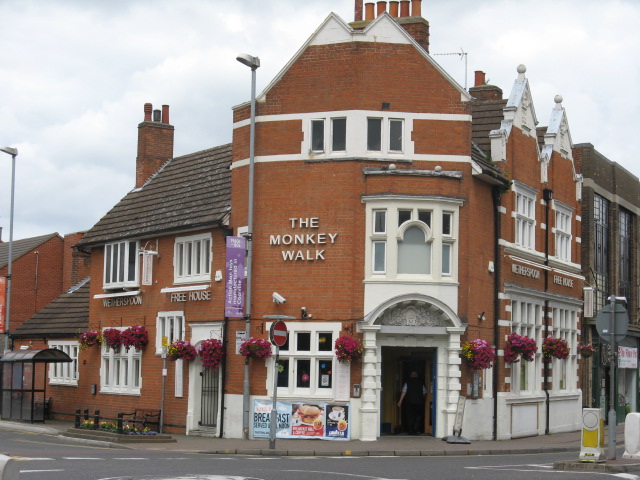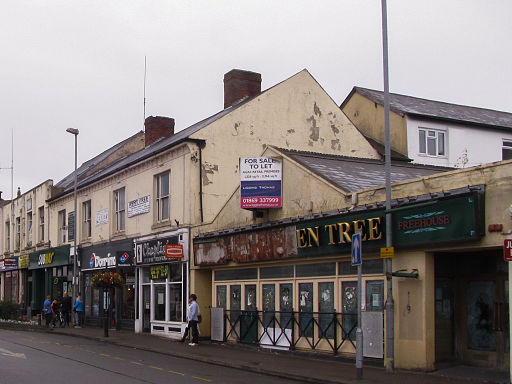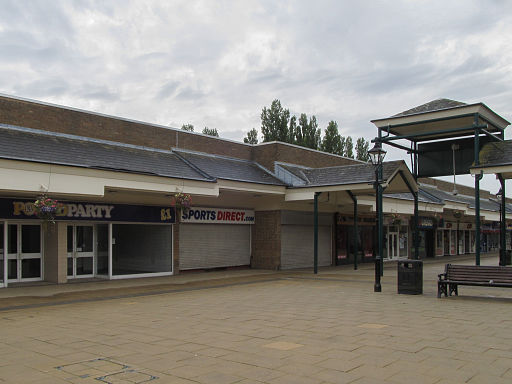I had not planned to do much mapping on the Bank Holiday Sunday: the day was set aside for a meeting of the British Plant Gall Society at Ryton Woods, Warwickshire.
The only thing I expected to map were paths in the wood, which surprisingly are almost all unmapped (hint to Mappa Mercia folks). This is one of the best areas of ancient woodland in the county and only a short distance from Coventry and Warwick. In fact, if anything, I would have expected to write about this wood which is mainly Oak with Hazel coppice.
 |
| Coalville : Hotel Street in 1988. The Railway Hotel is now a day nursery, and the buildings on the left beyond have recently been demolished. The Railway was one of a cluster of pubs adjacent to the level crossing and station: the others continue as pubs. Source Ben Brookshank, Geograph via Wikimedia Commons |
We had a productive morning, with one gall new to me, a rosette on a Sallow. I was pleased to find young galls of Andricus gemmeus adjacent to an old ditch which probably represents a medieval woodland compartment.
 |
| Rosette gall caused by Rhabdophaga sp. on Sallow, Ryton Wood |
However by lunchtime the rain was heavy and there was no sign of it abating. Searching for tiny things on leaves covered with droplets and smeared with water is not much fun, particularly as one is getting wet too, so at 2ish we called it a day.
Missing shops in town centres
As I had plenty of time for my return journey I decided to divert off the motorway and map the shops in Coalville.
This choice was totally inspired by Pete Reed's recent monumental piece of work analysing shops and retail mapping in England and Wales. This is an incredibly thorough analysis of how shops are mapped, and I really hope that someone will try and repeat the analysis for other countries. For me it is an exemplar of how we can start to use OSM data itself to drive analysis of completeness of data (although Pete did use the Food Hygiene Ratings data): ensure a number of places are mapped comprehensively and use those to build a model of how much data one might expect. In Pete's case a simple linear regression proved to be useful (following the 'good enough rule') to identify candidate unmapped places. This enabled as a final output of the work target areas which apparently have less than 25% of retail outlets mapped.
Mansfield, Retford, Newark, Grantham, Stamford, Melton Mowbray, Belper and Coalville. I'm hoping to do Melton soon as it's a place I pass through reasonably frequently. We have an enthusiastic new mapper in Belper so I'll leave that to him.
Coalville
Coalville is the one place I never visit. It's also in the centre of (not unexpectedly) a former coal field, and is therefore less prosperous than places like Melton and Stamford. Poorer places tend to have fewer OSM contributors (something Muki Hakaly pointed out years ago), so I have tended to try and direct some of my own mapping effort to such places. I always find them fascinating: they aren't glamorous, but are often much more distinct places than richer commuter towns: the so-called 'clone towns'. Many, like Coalville, were built around industries which have gone or declined, and piecing together how the geography of a town evolved both in its heyday and subsequently provides plenty of interest.Railways
 |
| Old Atlas of British railways showing lines around Coalville Source: Pre-grouping Atlas, Railway Clearing House via Wikimedia Commons |
 |
| Hotel Street Level Crossing and former site of Coalville Station from Phoenix Lane footbridge Source: Mat Fascione, Geograph, © CC-BY-SA |
 |
| Another view of the Hotel Street/High Street level crossing with the fomer Railway Hotel on the right. Source: Mat Fascione, Geograph, © CC-BY-SA |
Pubs & Clubs

|
| The Monkey Walk, a modern Weatherspoon's pub and Belvoir Street Source: the bitterman, Geograph via Wikimedia © CC-BY-SA |
Another aspect of Coalville is that even now it has a high density of pubs in the town centre. Two have gone, the Railway, and the Litten Tree, but many more remain, and The Monkey Walk (owned by Weatherspoons) looks to be new. There are also social clubs which are pretty similar to pubs (although historically somewhat cheaper): there is one next to the
 |
| The recently closed Litten Tree, Marlborough Square. Source: SK53, Geograph via Wikimedia Commons. © CC-BY-SA |
Sadly there were a couple of former places of entertainment: the Rex Cinema, still with name in place, but now a Dunelm Mills shop; and a very recently closed nightclub, The Emporium. According to wikipedia, this was one of the largest establishments in the country, but it closed a couple of years ago. This in turn uses a former cinema building.
 |
| The former Rex Cinema, Coalville. Source: SK53, Geograph via Wikimedia Commons, © CC-BY-SA |
I missed a dance academy on Ashby Road which is shown on Geograph.
Until very recently Coalville had a major technology and design museum on the site of Snibston Colliery: the Snibston Discovery Centre. Now Leicestershire County Council have closed it and plan to sell the land for housing. The adjacent theatre will, apparently, stay open. These latter facilities probably resulted as the result of financial initiatives to support former mining communities during the early 1990s. Now the town must fall back on the older infrastructure provided by pubs and clubs for entertainment.
Shops
 |
| Belvoir Square Shopping Precinct Source: SK53, Geograph via Wikimedia Commons, © CC-BY-SA |
For a relatively small place (population under 5,000), Coalville has a decent range of shops. The typical chain stores are mainly located in a modern shopping precinct (mall would be too grandiose term). Most other shops are located around the crossing of Belvoir Road and High Street (which continues as Hotel Street). What is striking are the number of quite specialised shops: a large toy shop with a range better than in many large urban centres; a specialist craft shop selling materials for patchworking; an engraver of sports trophies; and several slightly unusual sweet shops. I'm sure these types of shops survive in Coalville because rents and lower.
On the sadder side, apart from vacant stores (and Coalville doesn't seem worse than many far more prosperous places), one shop was used by a drug counselling service, and the large furniture store in the centre was once a small department store run by the Co-op. As everywhere, hairdressers, beauty salons and tattooists have a very obvious presence.
Landmarks
Coalville is neither very grand, nor very old. Such places rarely acquire buildings of character & significance, and Coalville is no exception. What is exceptional is the remarkably assured and assertive clock tower memorial in the centre of the town. |
| Memorial Clock Tower, Coalville Source: Mat Fascione, Geograph, © CC-BY-SA |
Despite Coalville's raison d'etre as a centre of the mining industry (and not just coal, but stone quarries) it is on the edge of some fine countryside, notably parts of Charnwood Forest, such as the National Nature Reserve at Charnwood Lodge.
Conclusions
Coalville's post-industrial landscape is changing again. Council cuts have hit provision of museums, and there seems a voracious demand for housing in the area. I presume at least some of this is for commuters to the nearby large towns, and perhaps as far afield as Birmingham. Another recent development is the presence of large distribution warehouses in and about the town. It is well situated with relatively simple access to the M1 and M42 motorways and the A38 express road. Some of these developments are likely to change its character, but at the moment it's heritage as a mining town still predominates.OpenStreetMap takes me to places which I wouldn't otherwise visit, and forces me to look again at things I would not notice. This little visit to Coalville is typical: there are always things of interest: whether it be deciphering the town's history, or trying to guess where the future is taking it. I hope that the side effect is that OSM data are a little more useful for people living in, or visiting, Coalville and surrounding villages. Even if the shops dont get checked frequently surveying them and adding addresses provides a more stable data set of longer-term usefulness.


Thanks for the mention, the mapping and an interesting post.
ReplyDeleteIn a similar vein I've been adding shops in Morpeth http://www.openstreetmap.org/#map=18/55.16778/-1.68871, Berwick and now bits of Newcastle. I've just added my first "shop=wigs". How exciting is that? Also a friend has given me a book on Newcastle's Grainger Town, which makes for an interesting mix of mapping shops and discovering amazing buildings (which I've known for years without seeing properly).
If you havent seen it read Jones the Planner's latest piece on Tyneside (stunning pictures too): Superlative Newcastle
DeleteThis comment has been removed by the author.
ReplyDelete